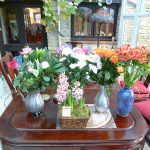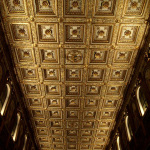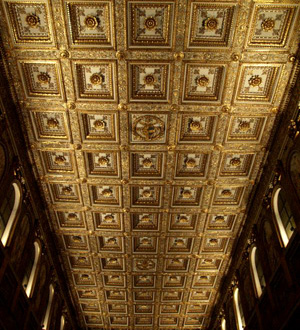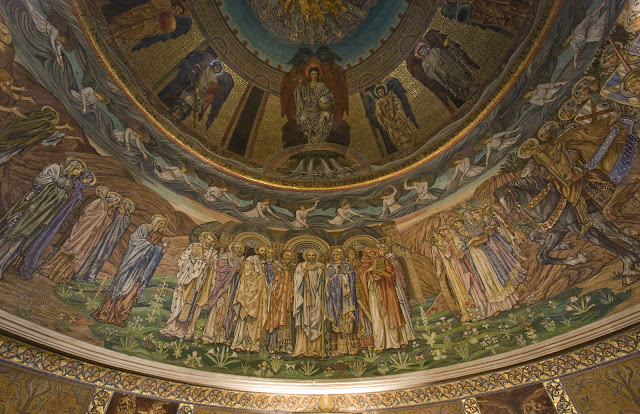
Come and you will see (John 1:39)

Anita Mathias: Dreaming Beneath the Spires
Anita Mathias's Blog on Faith and Art

I used to be a hyper, giggly, talkative girl in my late teens and early twenties, the proverbial “life and soul of the party.” Beneath that persona, though, I was deeply serious. I remember returning to my room after parties, and sighing with relief. I felt I was returning to my true self. “Hello self, I’m back.”


I generally try to avoid controversy, for two reasons.
Well: more flak than I’ve ever received from anything except in my early days of blogging. Here are a few tweet and DMs.
Gay stuff is the way to tear apart families and christianity. Has nothing to do with your ‘tolerancy’.
“The spread of an anti-family ideology and the abasement of sexual morality appear interconnected.”
In a healthy society the Christian family reflects the splendor of Christ. In dedication to one another, raising children.
“Family” is not a gay ‘relation’. Church acknowledges marriage between man and woman. People like you are very dangerous.
* * *


| Detail from a courtyard wall at the Alhambra (stucco above, tile below) |
(Thanks, Roy Mathias, for all your help with photographs and writing for this post.)
Click, or right click, on an image to see a larger version.
We have had wanted to visit the Alhambra for many years, and this dream came true in December 2010, while Granada, and the rest of Europe was enduring its coldest winter for years. Granada is a rugged mountain city with steep winding roads. The Alhambra is at the top of one of these, and is a large complex including a place, mosque, fort and extensive gardens.
Nasrid Palace (Palacios Nazaries)
The Nasrid Palace is the star attraction. One enters through a rather disappointing entrance and into a dark hall with a carved wooden ceiling and plaster work.
However, one soon sees the real Alhambra. Here is the first courtyard
and one walks through courtyard after courtyard (details shown later)
| Alcove at the Alhambra |
(I never did find out what the white bowls were for.)
Water played an important role in Moorish architecture.
| Alhambra (Harem courtyard) |
| Same view of the Harem courtyard at the Alhambra from furtherback. |
| Alhambra stucco work |
Apparently the Alhambra was designed to be renewed and redecorated by successive rulers. Much of the decoration is plaster, and in parts, which naturally I didn’t bother photographing, on can see it in a state of decay. The patterns were a combination of geometric patterns, as well as Islamic inscriptions. For example “The is no Conqueror but God”, the one time battle cry of the Nasrids, is repeated over and over again on the walls. Here are some details. One is surrounded by these and can spend a whole day studying the patterns, if if one can’t read the inscriptions.
| larger scale view of the same |
| The top of a pillar — one can see remiains of blue paint. |
| A little hard to see, but this is a ceiling |
| Wooden ceiling |
Towards the end of the tour one comes to the Courtyard of Lions. Unfortunately it was undergoing repairs and we saw it only through scaffolding. These pictures are from the web
A long day pleasant day, with only a few places to sit.

Santa Maria Maggiore is one of the twenty “Santa Maria” churches listed in our guide to Rome, and one of the five great basilicas of Rome. The first time I saw the church it was summer and it was so crowded that the only part I could see easily was the wonderful ceiling:
and here’s a detail
Here is a statue of Pope Pius IX praying in front of a reliquary supposedly containing fragments of Christ’s crib. Notice the wonderful coloured marble on the walls.
The Pantheon was originally a Roman temple completed by Hadrian almost 1900 years ago, and looks solid enough to stand another 1900 years.

On arriving in Rome our first stop was–wait for it!–St Paul’s Within the Walls, the American Episcopal Church in Rome—the first non-Catholic church in Rome. An unusual lovely little church decorated by the pre-Raphaelite artist Edward Burne-Jones in mosaics. It is not well known, and rather hard to find in guidebooks. (If you are interested in visiting, it is on Via Nazionale, Rome). Remarkably we had seen the painting these mosaics were based on up close at an exbibition at the Ashmolean museum in Oxford a few months earlier. The mosaics are much more striking than the paintings.
 |
| The dome above the altar in St. Paul’s within the Walls |
Just above the arc of flowing water there are inscriptions in Hebrew and Greek — the former the beginning of Genesis, and the latter the beginning of Revelation. Here are some details
 |
|
| Detail — angelic choir |
Burne-Jones was especially pleased with the design ‘it said as much as anything I have ever done’ … but acknowledged that ‘everything is done to make it not a picture … and few will understand it’. When the large body colour version was shown at the New Gallery in 1888 ‘no one even looked at it’.
The last and most dramatic design was never executed: an apocalyptic vision of Satan and his angelic army swarming out from the gate of heaven, a dark regiment of beautiful knights who might have stepped straight from the chorus of Parsifal.